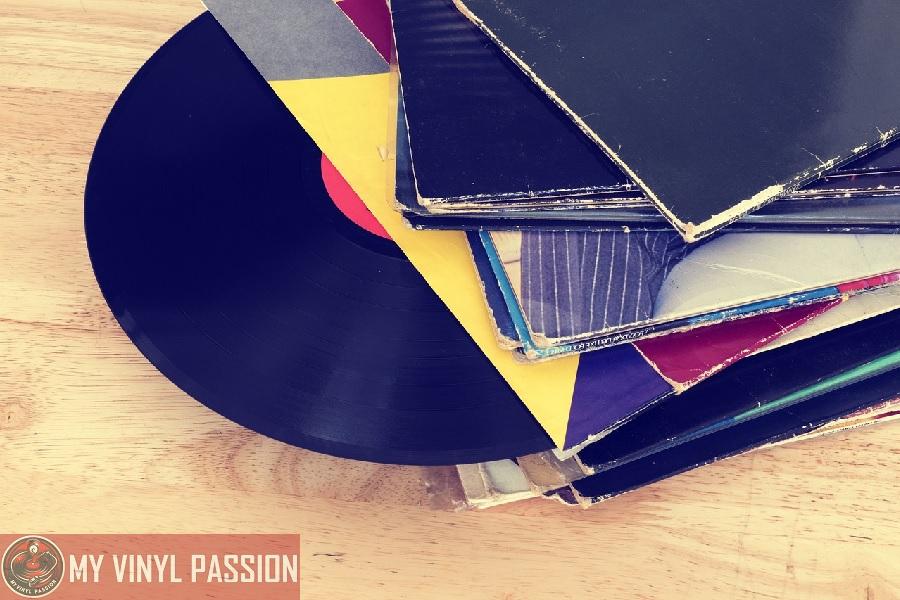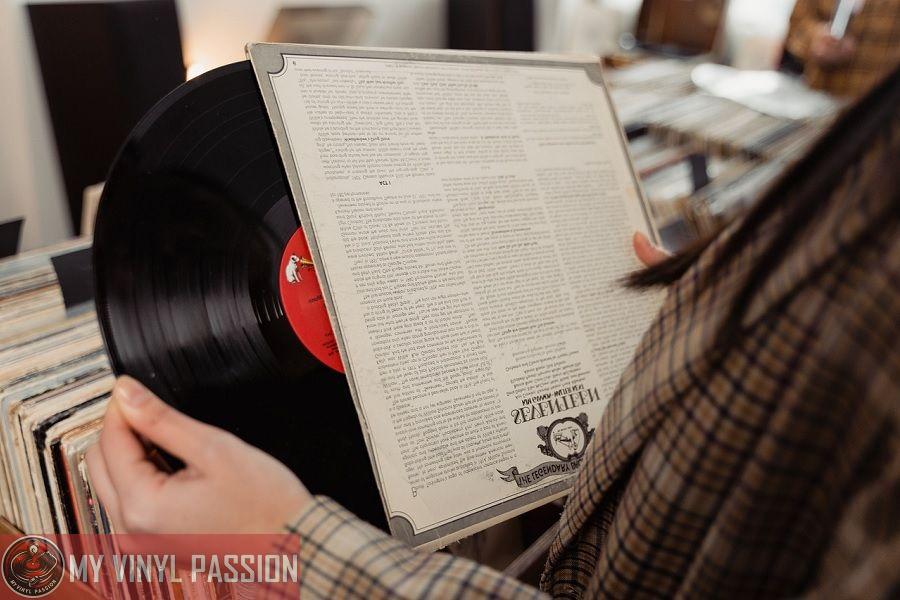Transporting vinyl records requires careful consideration to preserve their quality and prevent damage.
Vinyl records are delicate, and factors like temperature, handling, and packaging can significantly impact their condition.
Whether you’re a collector moving your library, a DJ transporting records to a gig, or simply sending a record to a friend, it’s crucial to understand the best practices for moving these invaluable items safely.
In Summary
Transport vinyl records in sturdy, specialized containers or boxes that are designed to hold records securely and protect them from bending or warping.
Always store and transport vinyl records in a vertical position to prevent warping and avoid stacking them on top of each other.
Ensure that vinyl records are kept away from extreme temperatures and direct sunlight during transport, as heat can cause warping.
Place each record in its own protective inner sleeve and outer cover to guard against scratches, dust, and other physical damage during transportation.
Packaging vinyl records well is essential to protect them from scratches, warping, and breakage.
Use sturdy boxes that fit the records snugly without excess space for them to move around during transit. Ideally, records should be taken out of their sleeves to prevent seam splits and placed in protective plastic or paper sleeves.
Firm cardboard inserts can add additional structural support to prevent bending. For added insulation against temperature changes and shocks, bubble wrap or padding materials can be used to fill any remaining gaps in the box.
When it comes to the actual transport of vinyl records, keep the box in a stable, upright position to avoid pressure on the records that could lead to warping.
Avoid leaving the records in a hot or cold car for extended periods, as extreme temperatures can damage them.
When shipping records through a courier, it’s worth considering services with stronger handling protocols or insurance options that cover rare or valuable items.
Taking these steps helps ensure that your vinyl records arrive at their destination in the same condition they left.
Preparing Vinyl Records for Transport
When you plan to transport vinyl records, ensuring their safety and maintaining their condition is crucial. You’ll need the right supplies, and each record must be properly cleaned, sleeved, and padded for the journey ahead.
Choosing the Right Supplies
To transport your vinyl records effectively, begin with sturdy boxes that can comfortably fit the records without too much extra space. Boxes made specifically for vinyl are ideal, as they prevent shifting during transport.
For additional protection, make sure you have ample bubble wrap and foam padding to cushion the records.
Cleaning and Inner Sleeves
Before packing, clean each vinyl record with a soft, anti-static cloth to remove dust and prevent static build-up that can attract further debris. It’s also important to use anti-static inner sleeves as they provide an extra layer of protection against scratches.
Acid-free paper is a good alternative if you don’t have specialized sleeves, which ensures that the vinyl stays free from acidic degradation.
Padding and Protection
Once sleeved, wrap each vinyl in bubble wrap for shock absorption. Place a layer of foam padding at the bottom of your box, then stack your records vertically, as laying them flat can cause warping.
Fill any remaining gaps with crumpled acid-free paper or additional bubble wrap to prevent movement. The record sleeve should be snug but not too tight to avoid pressure on the vinyl itself.
Packing Vinyl Records
Proper packing of vinyl records is crucial to prevent damage during transport. You’ll need to ensure that the records are not at risk of warping, scratches, or impact damage.
Secure Packing Techniques
When packing vinyl records, it is paramount to handle them carefully to avoid exposure to heat, as vinyl can melt under high temperatures.
Cardboard covers are the first line of defense, offering a rigid shield around each record. Insert your vinyl records into these sleeves and then place them into plastic covers for additional protection against moisture.
For cushioning, use bubble wrap or foam pads as a cushion in between records.
This method ensures minimal movement and reduces the risk of scratches or pressure damage. Pack the records vertically, as if they were on a shelf, and never stack them flat under weight to avoid warping.
Box Selection and Usage
Choosing the right boxes is as important as the packing technique. Use heavy-duty, corrugated cardboard boxes that can withstand weight and pressure.
The size of the box should allow for snug placement of your vinyl with enough room for cushioning without forcing the records to bend. If needed, reinforce the box’s corners with additional cardboard pieces to enhance structural integrity.
Once packed, seal the boxes with strong packing tape and label them clearly with “Fragile – Vinyl Records” to ensure careful handling. Keep the boxes in a cool, dry place until they’re moved, as heat can again pose a risk of warping or melting the records.
Shipping and Moving Vinyl Records
When it comes to shipping or moving your prized vinyl records, careful consideration of the method you select and the service providers you engage with is essential for safe transport.
Choosing a Shipping Method
USPS Media Mail is a cost-effective method for shipping vinyl records, especially when you are not in a hurry. The media mail rates are reasonable, often making it the cheapest way to ship your collection.
For expedited service, consider USPS Priority Mail, which offers quicker delivery though at a higher cost. Remember, the key is to choose a method that fits both your budget and your timing requirements.
- Media Mail: Low-cost, can be slow, tracking provided
- Priority Mail: Faster, more expensive, includes insurance and tracking
Working with Moving Companies
When you’re moving a large collection of vinyl records, collaborating with a moving company that has experience in handling delicate items is crucial.
Verify that they offer specialized transport for items like vinyl that need to be protected from extreme temperatures, dust, and mishandling. Always check reviews and ensure they provide proper insurance coverage for your records during the move.
- Checklist for Moving Company:
- Experienced with delicate items
- Offers specific transport services for vinyl records
- Provides insurance coverage
- Has positive customer reviews
Organizing and Cataloging
When you embark on the task of transporting your vinyl records, it’s crucial to first organize and catalog your collection. This will not only protect your records during transportation but also simplify the process of setting them up again at the new location.
Step 1: Categorize Your Collection
Begin by categorizing your records. You can organize them by artist, genre, or any other method that makes sense to you.
This will make finding a specific record easier once you have relocated.
Example Methods of Categorization:
- By artist (alphabetically)
- By genre (rock, jazz, classical, etc.)
- By era or release date
Step 2: Create a Catalog System
Next, establish a catalog for your collection. This can be as simple as a handwritten list or as intricate as a database with detailed information about each vinyl.
Essential Catalog Details:
- Artist Name
- Album Title
- Genre
- Condition
Step 3: Update Your Catalog Regularly
Ensure that your catalog is a living document. As you add or remove items from your collection, update the catalog promptly. This is important for maintaining the organization of your collection and knowing the contents of your library at all times.
Step 4: Use Protective Sleeves and Dividers
Finally, protect each record with sleeves and use dividers within your storage boxes. This will prevent friction and possible scratches on the vinyl surfaces during transit.
Remember, the time you invest in organizing and cataloging your vinyl records will pay off not just for the transport but also for the ongoing enjoyment and maintenance of your collection.
Special Considerations
When you’re transporting vinyl records, it’s crucial to protect them from environmental risks and comprehend the specific protocols for air travel. Ensuring their safety means considering temperature control and the regulations of airlines.
Climate and Environmental Factors
Your vinyl records are vulnerable to heat and extreme temperatures. It’s essential to keep them in a climate-controlled environment, away from direct sunlight, to prevent warping and other damage.
Heat can cause irreversible harm, so when transporting vinyl, consider insulated containers or climate-controlled vehicles to maintain a steady, moderate temperature.
Transporting Vinyl Records by Air
Traveling with vinyl records on a plane requires additional precautions. Firstly, ensure that your records are packed in sturdy containers that can withstand pressure changes.
Be aware of airline regulations for vinyl records on a plane, as most will allow them as carry-on or checked baggage, but you should always check with your specific airline in advance.
To minimize risk, opt to keep them as a carry-on to better control their exposure to extreme temperatures and handling during the transport.
FAQs
What is the best way to pack vinyl records for moving?
Pack vinyl records upright in sturdy, specialized record boxes or crates, ensuring they are snug but not overly tight, and use bubble wrap or padding to fill any extra space.
Can I transport vinyl records in my car without damaging them?
Yes, you can transport records in a car, but keep them vertical, avoid direct sunlight or heat sources, and ensure they don’t shift during the drive.
Is it safe to transport vinyl records in cold weather?
Yes, but avoid extreme cold. Rapid temperature changes can be harmful, so allow records to gradually acclimate to room temperature before playing them. Q:
How should I handle vinyl records during transport to prevent damage?
Always handle records by the edges or the labeled surface, avoid touching the grooves, and ensure your hands are clean to prevent oils or dirt from transferring.
Can I stack vinyl records flat when transporting them?
No, it’s not recommended to stack vinyl records flat as this can lead to warping and damage. Always transport them in a vertical position.





